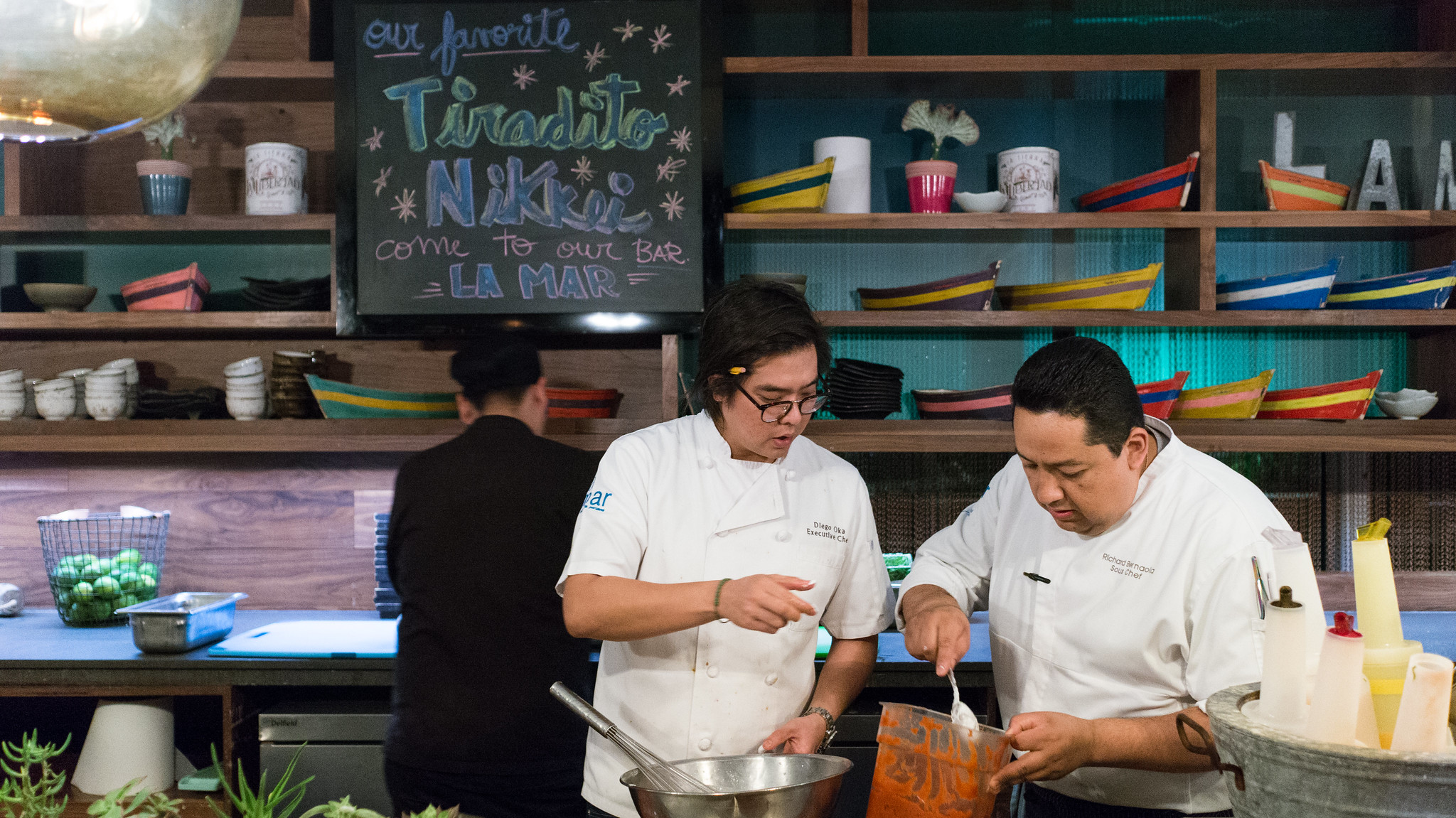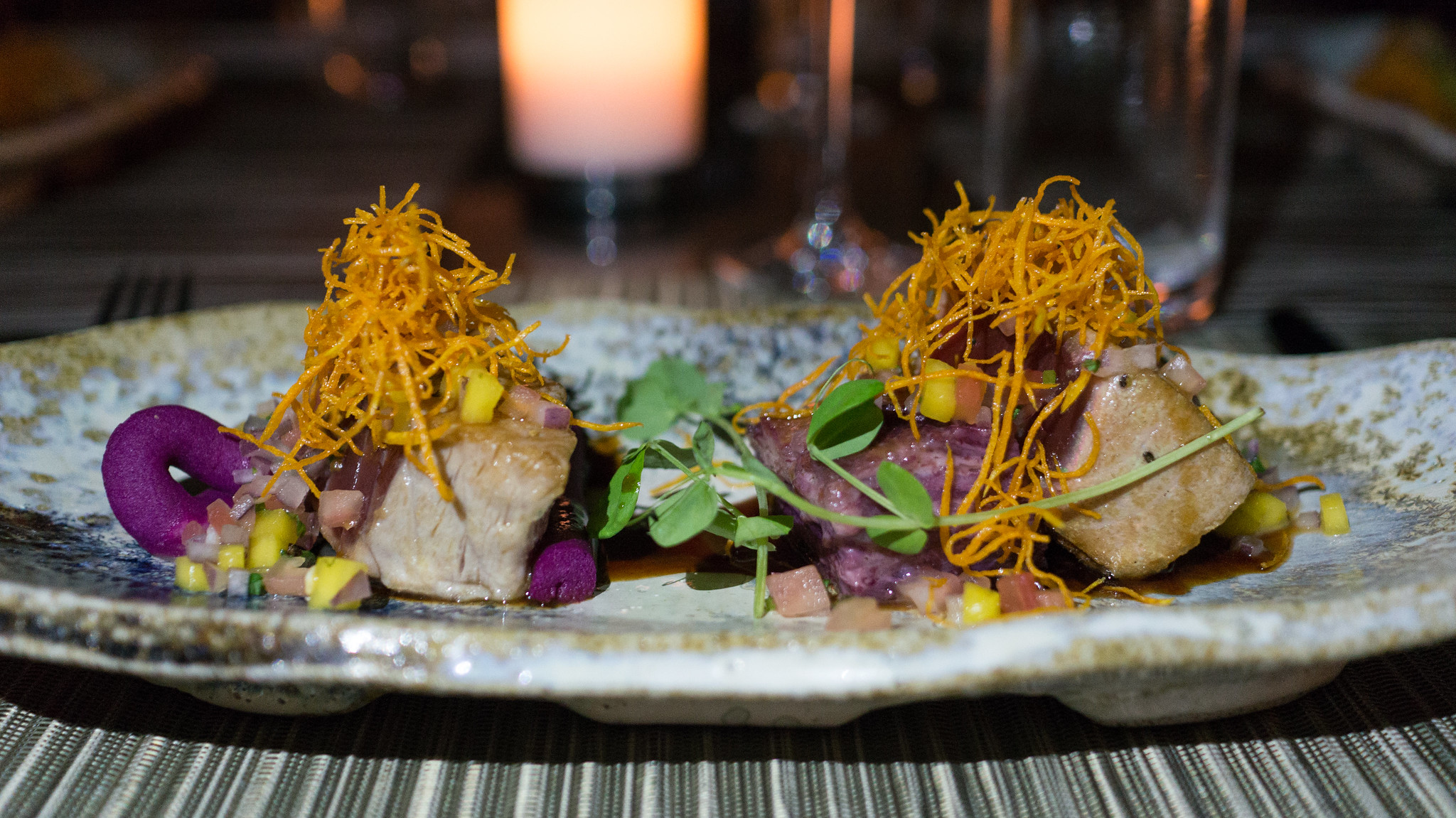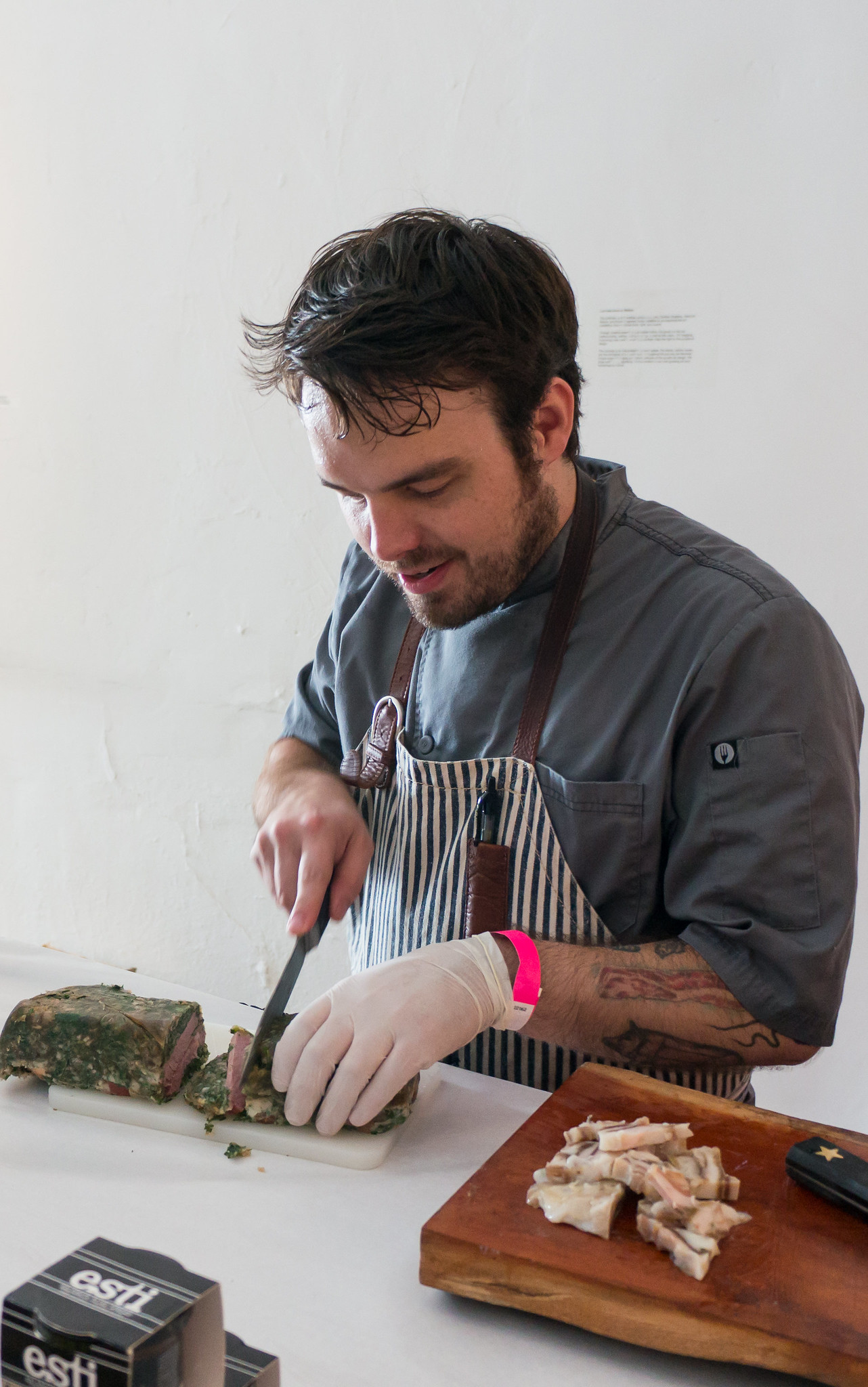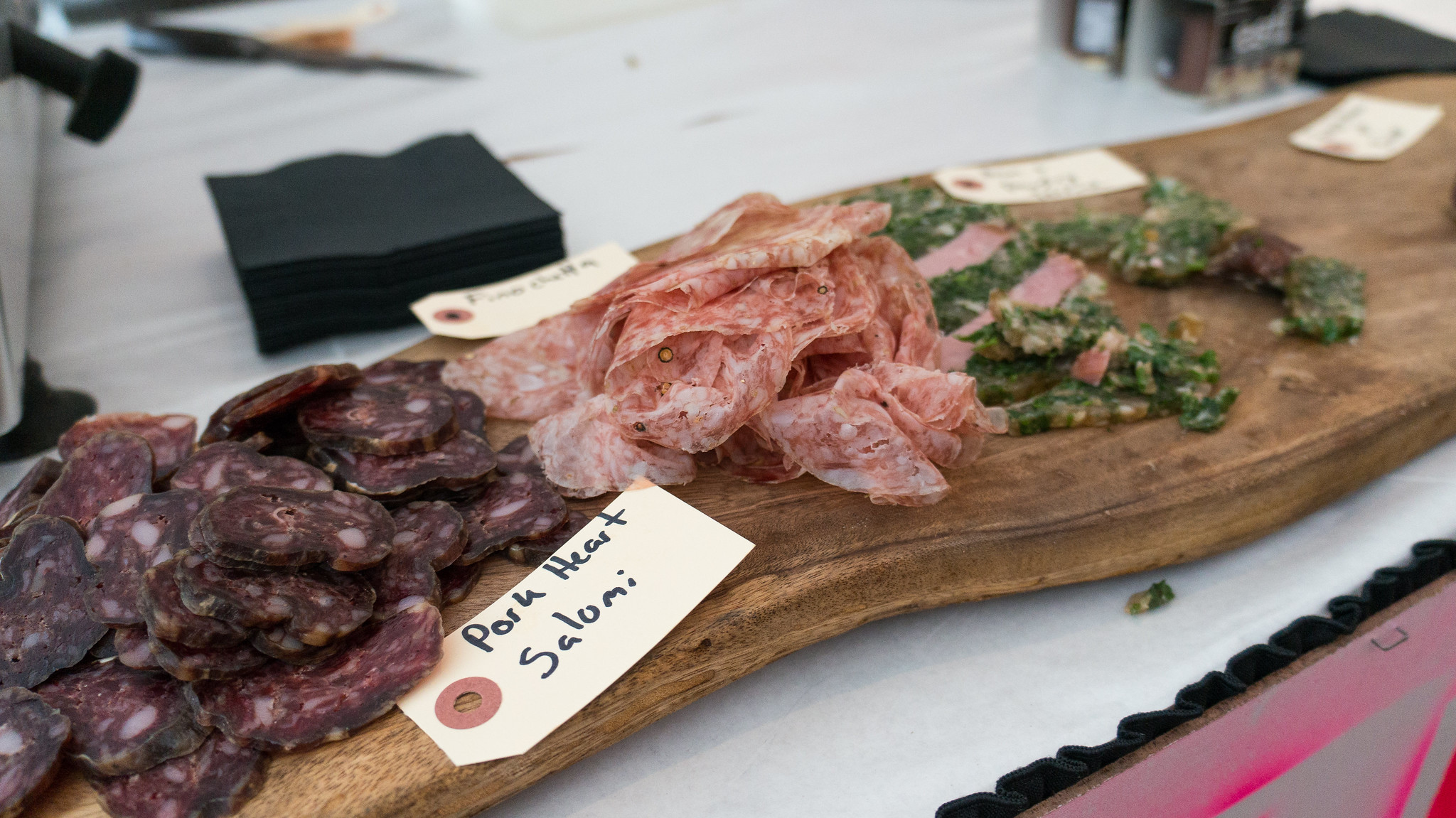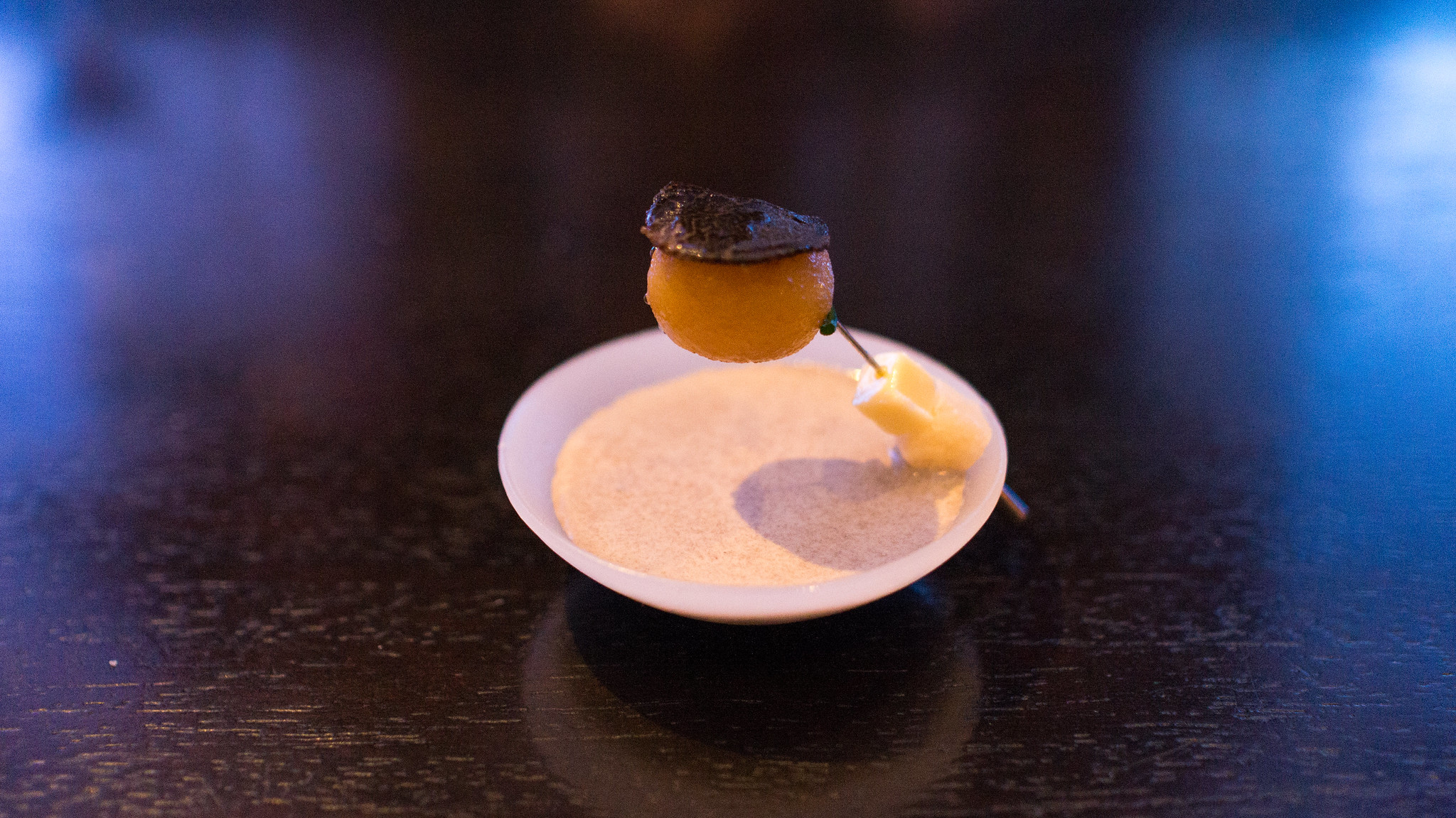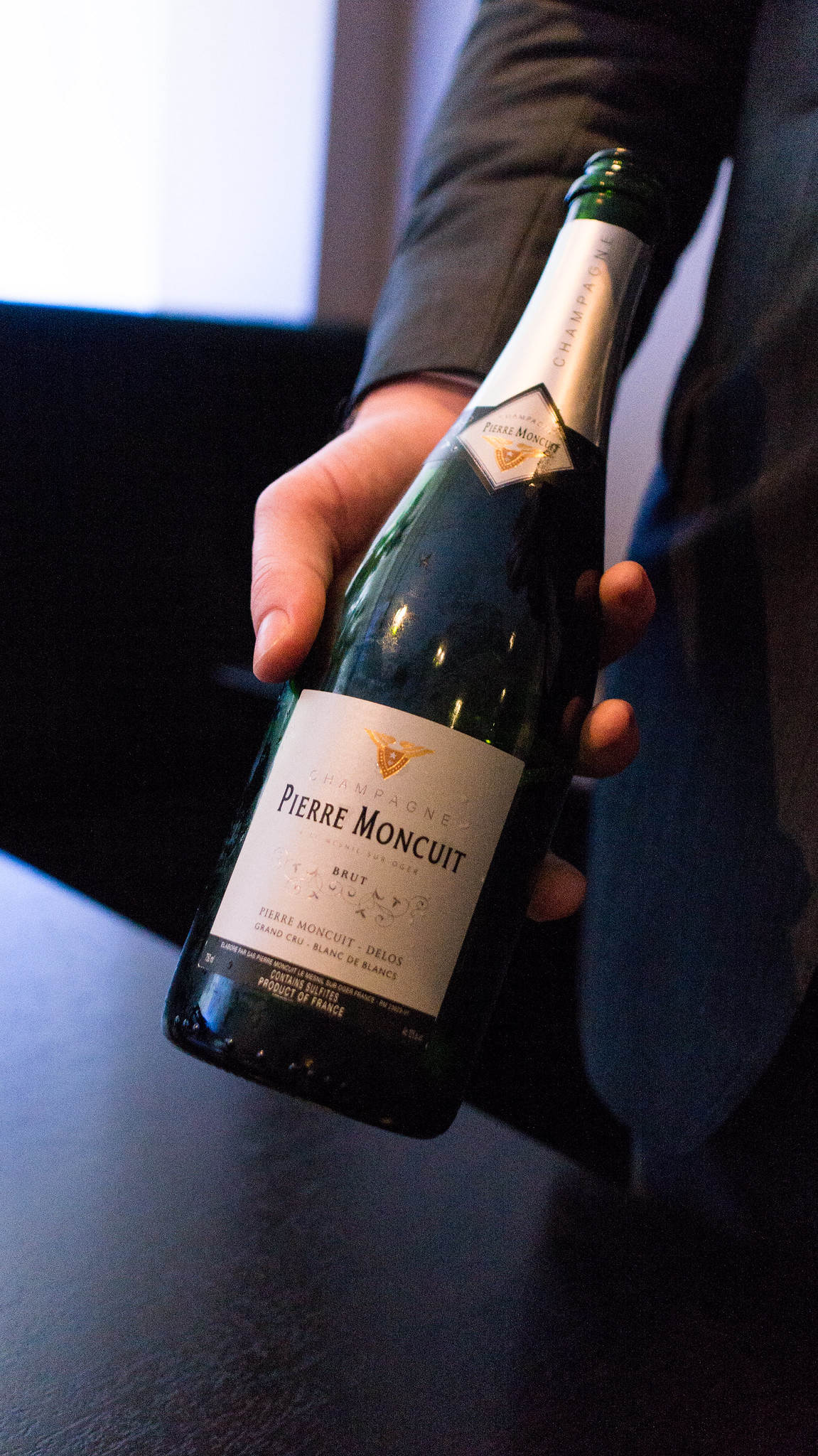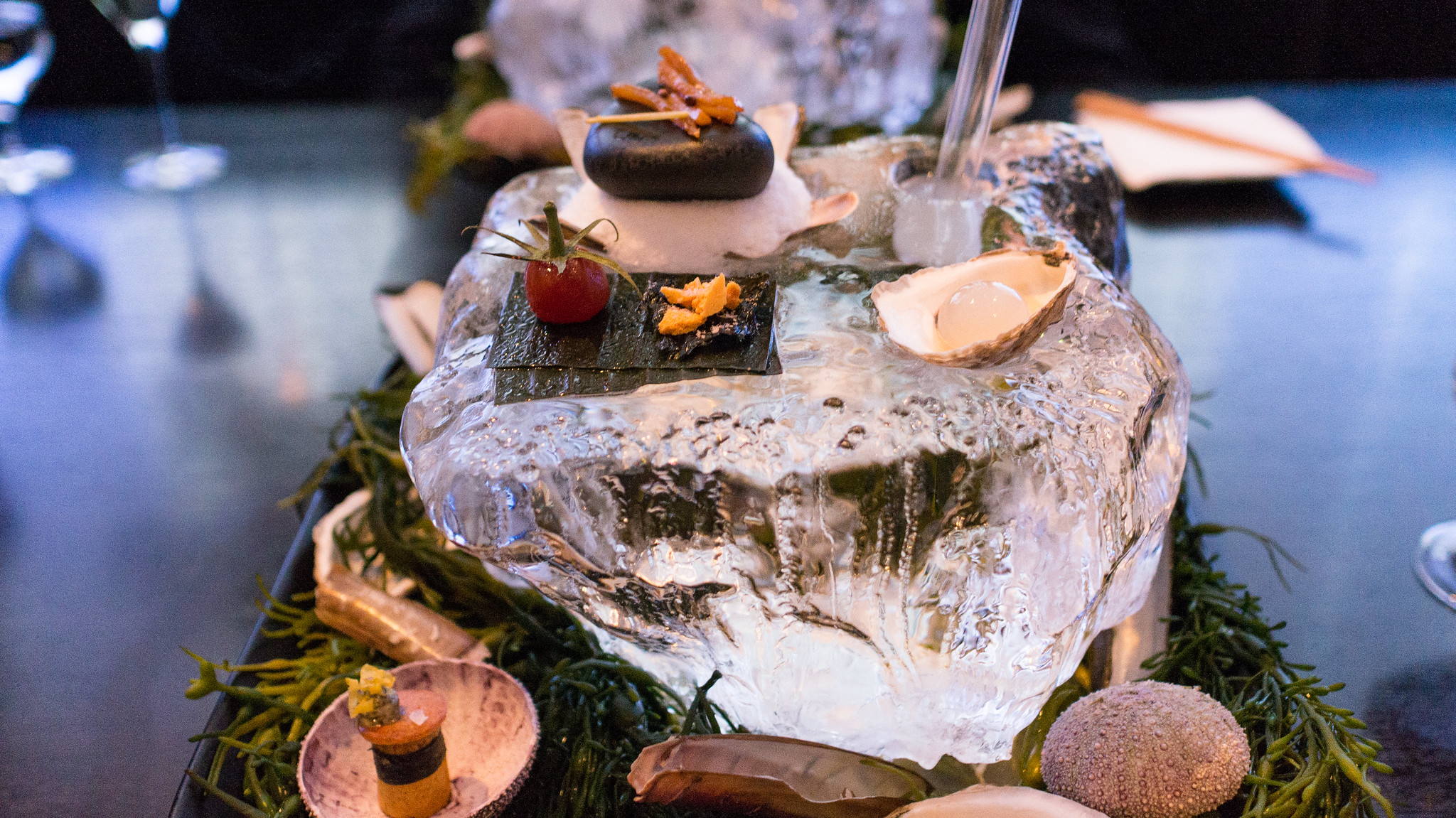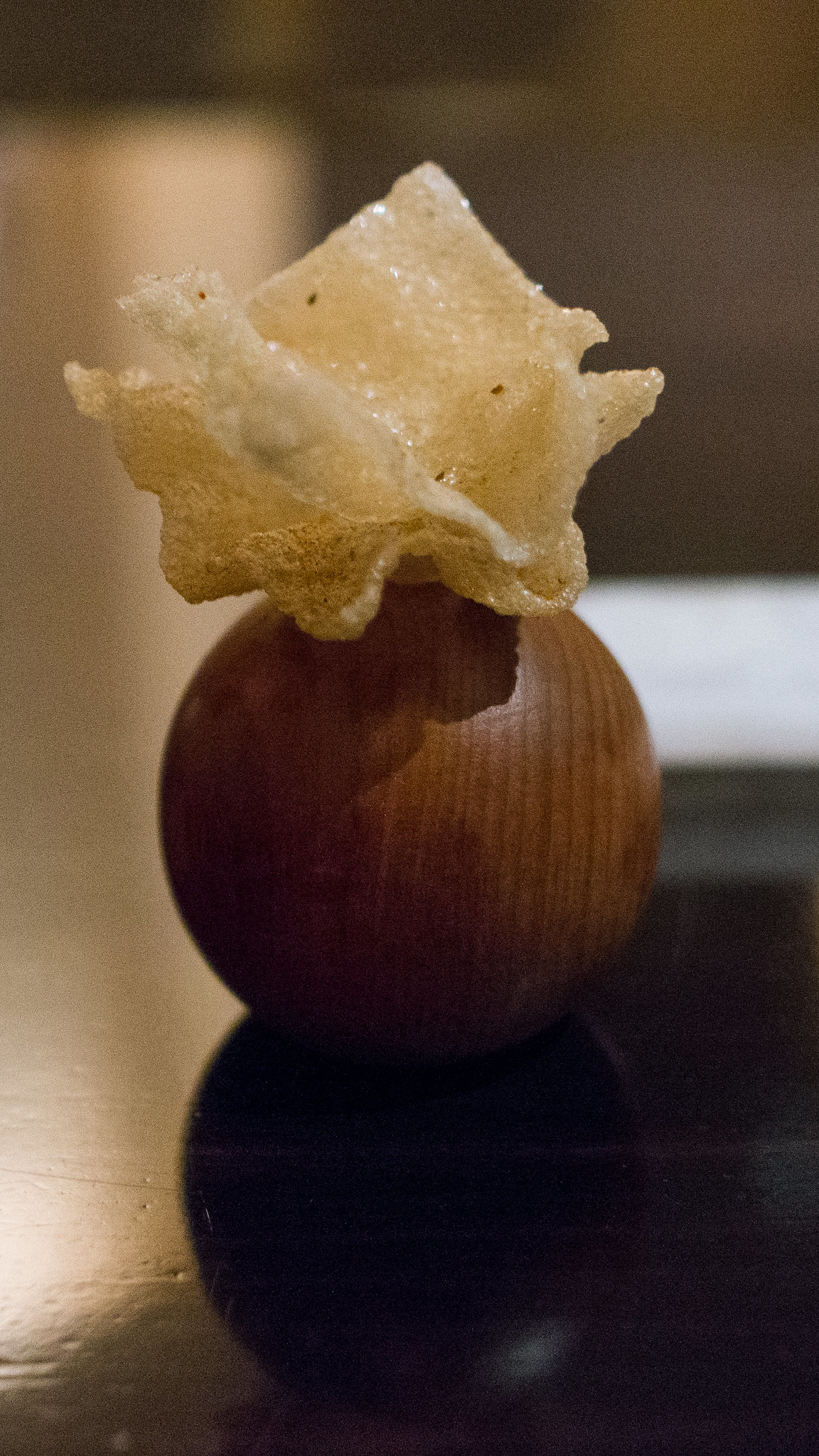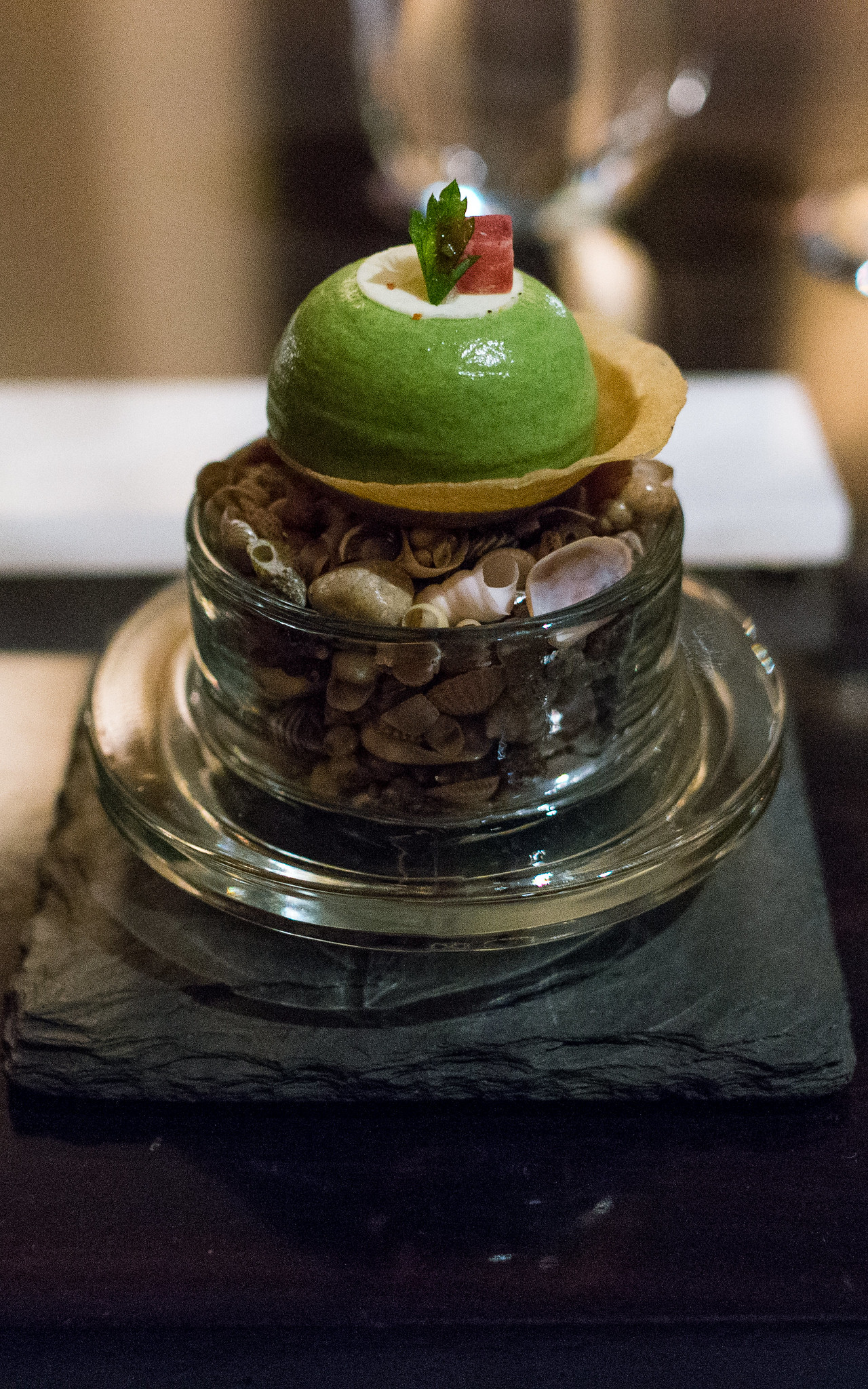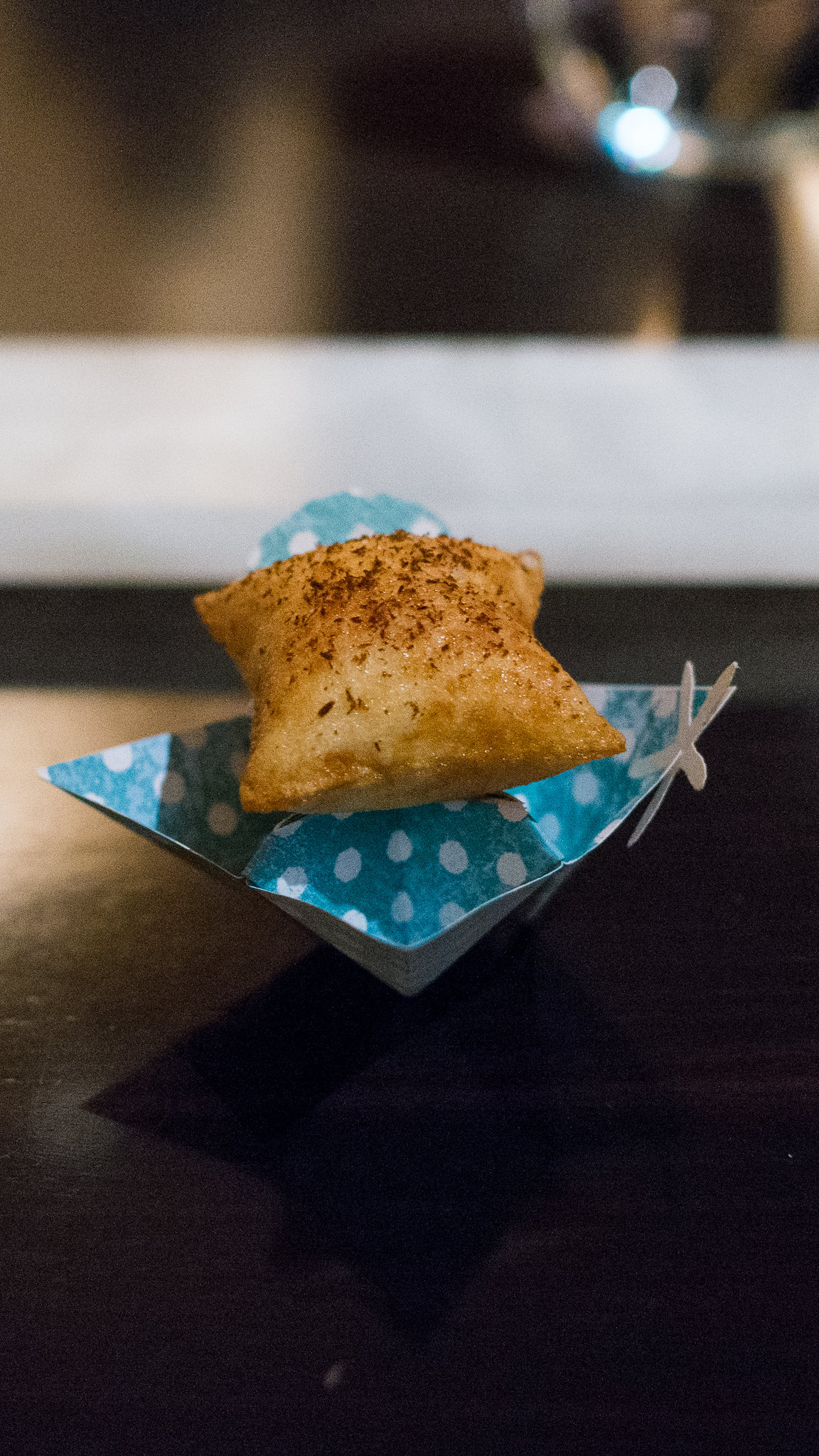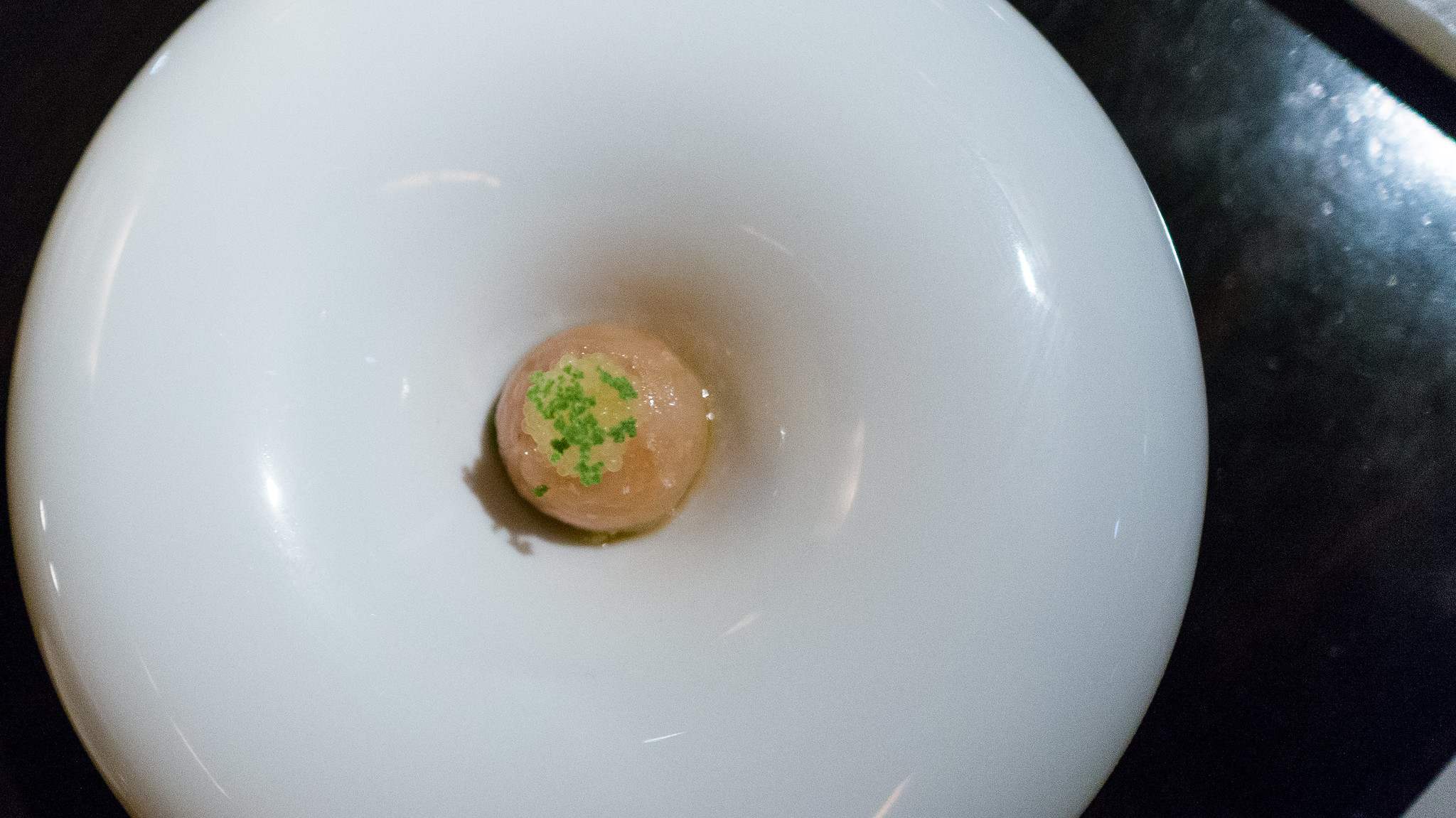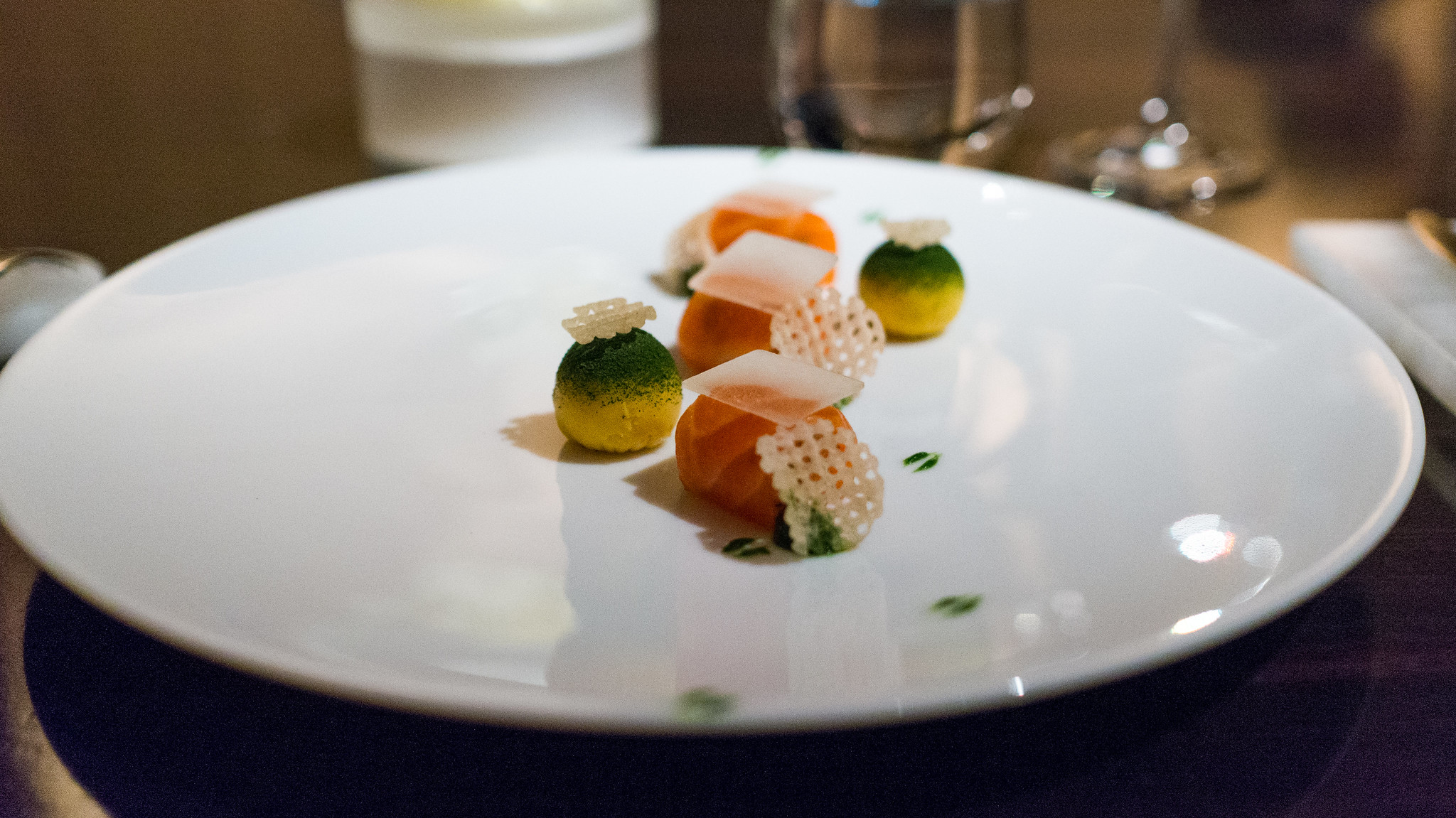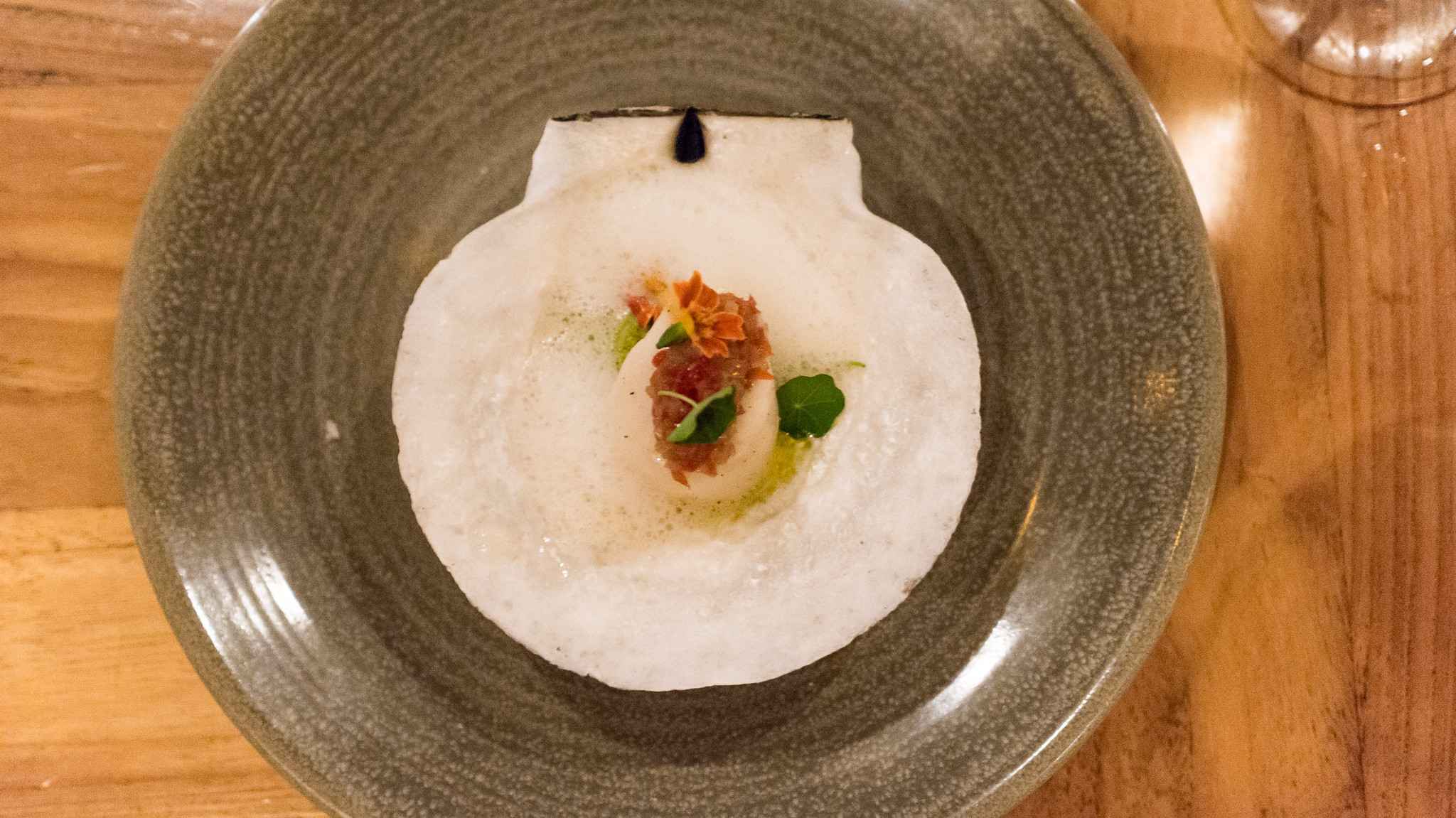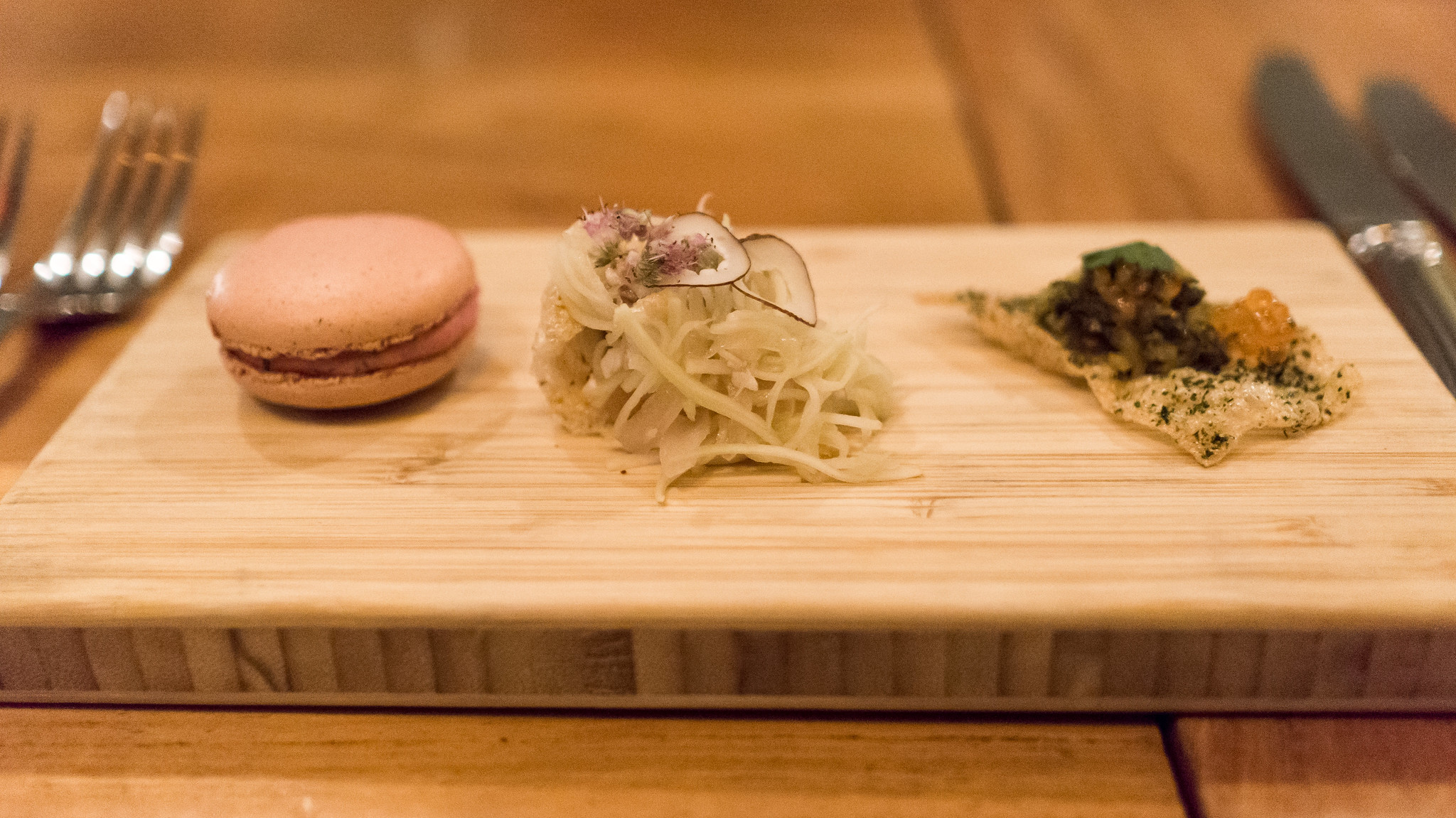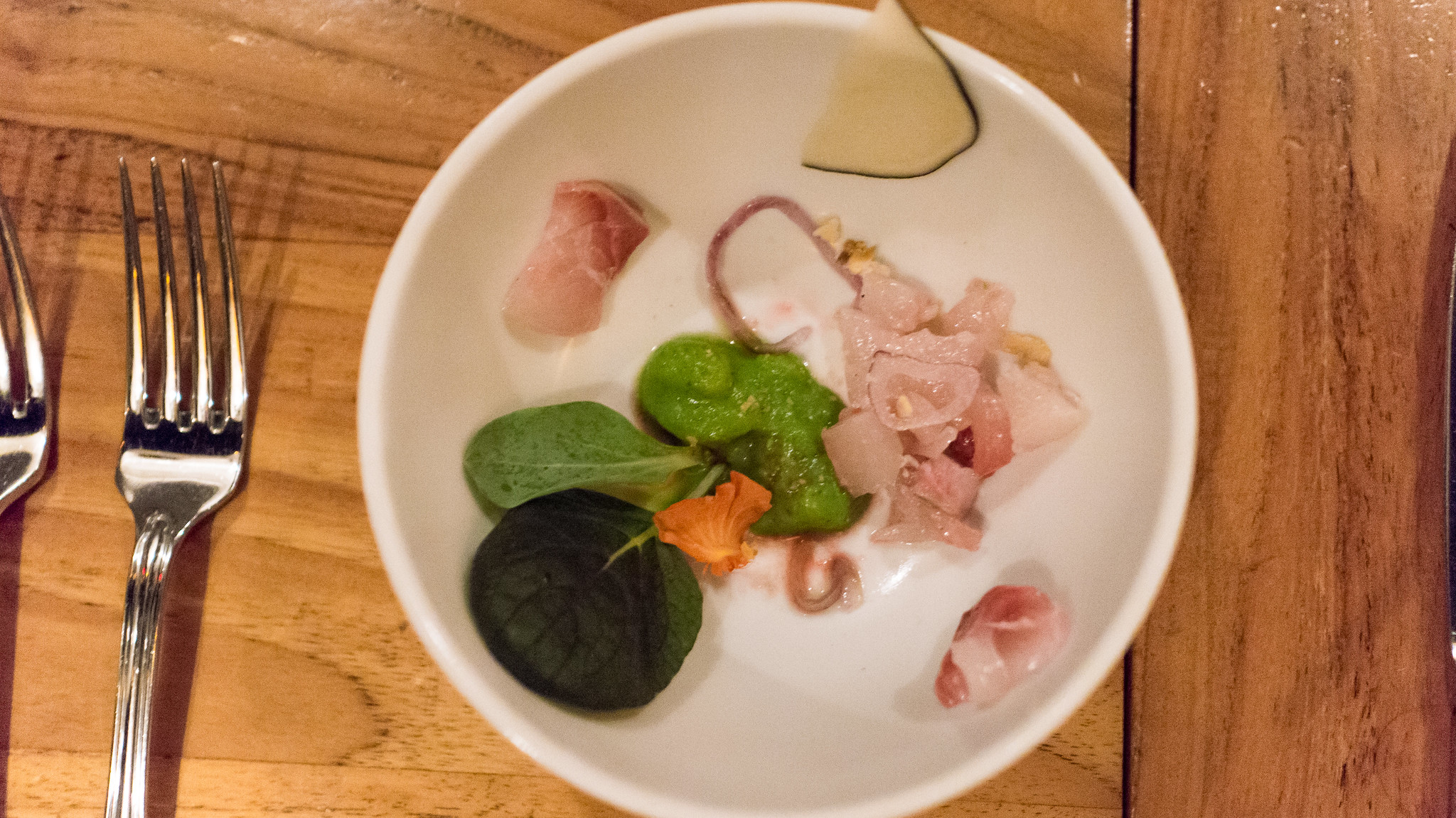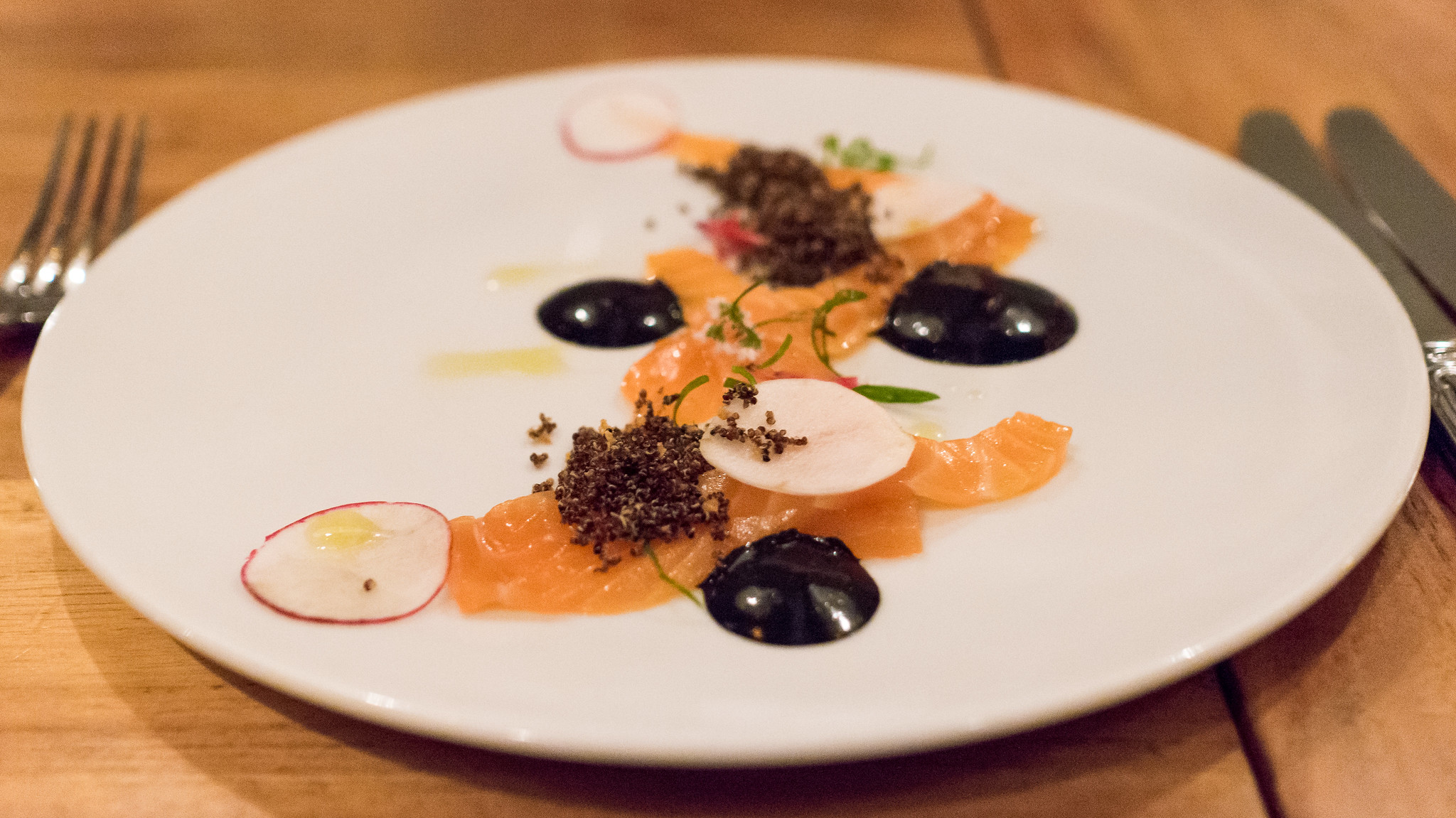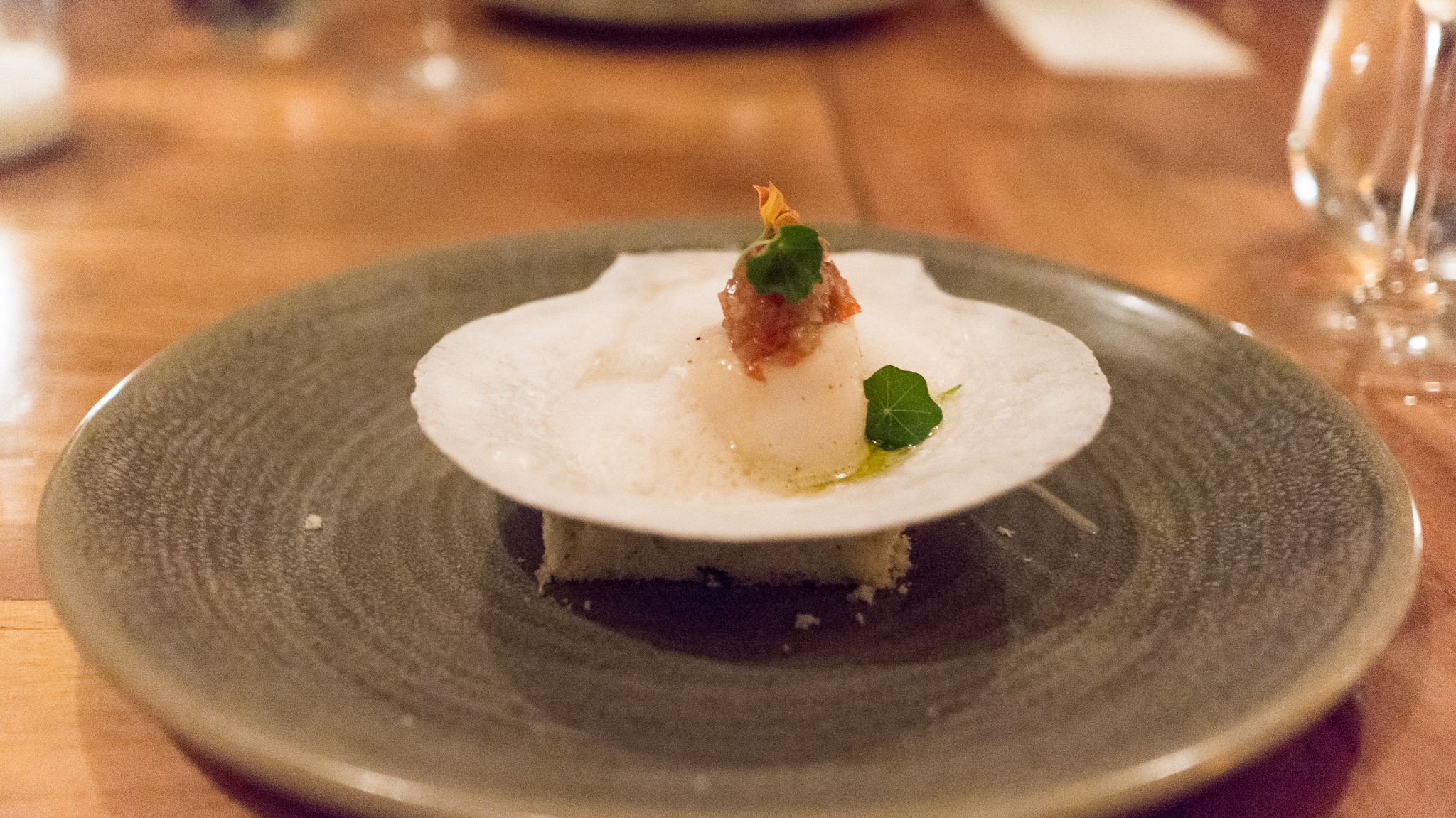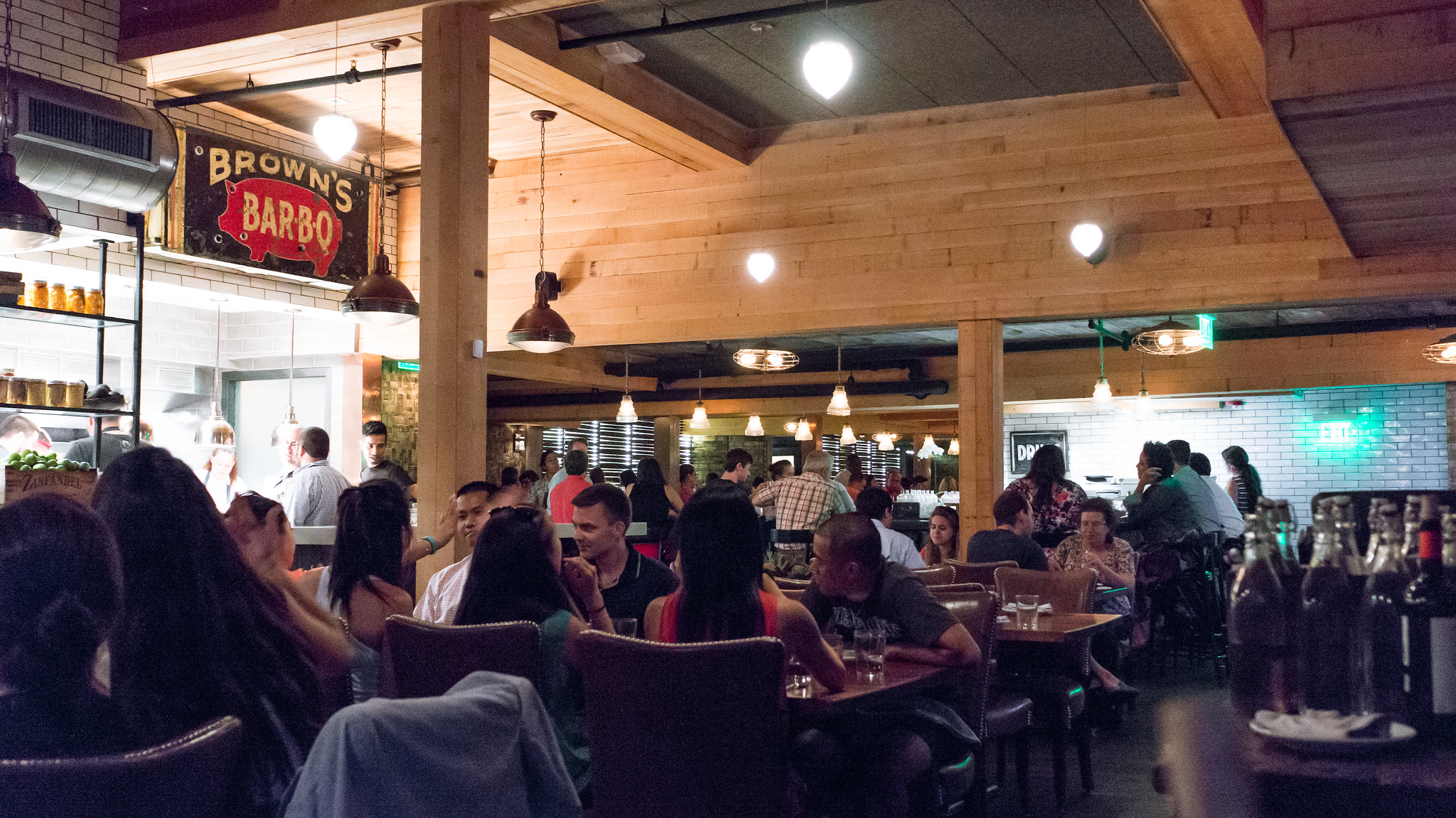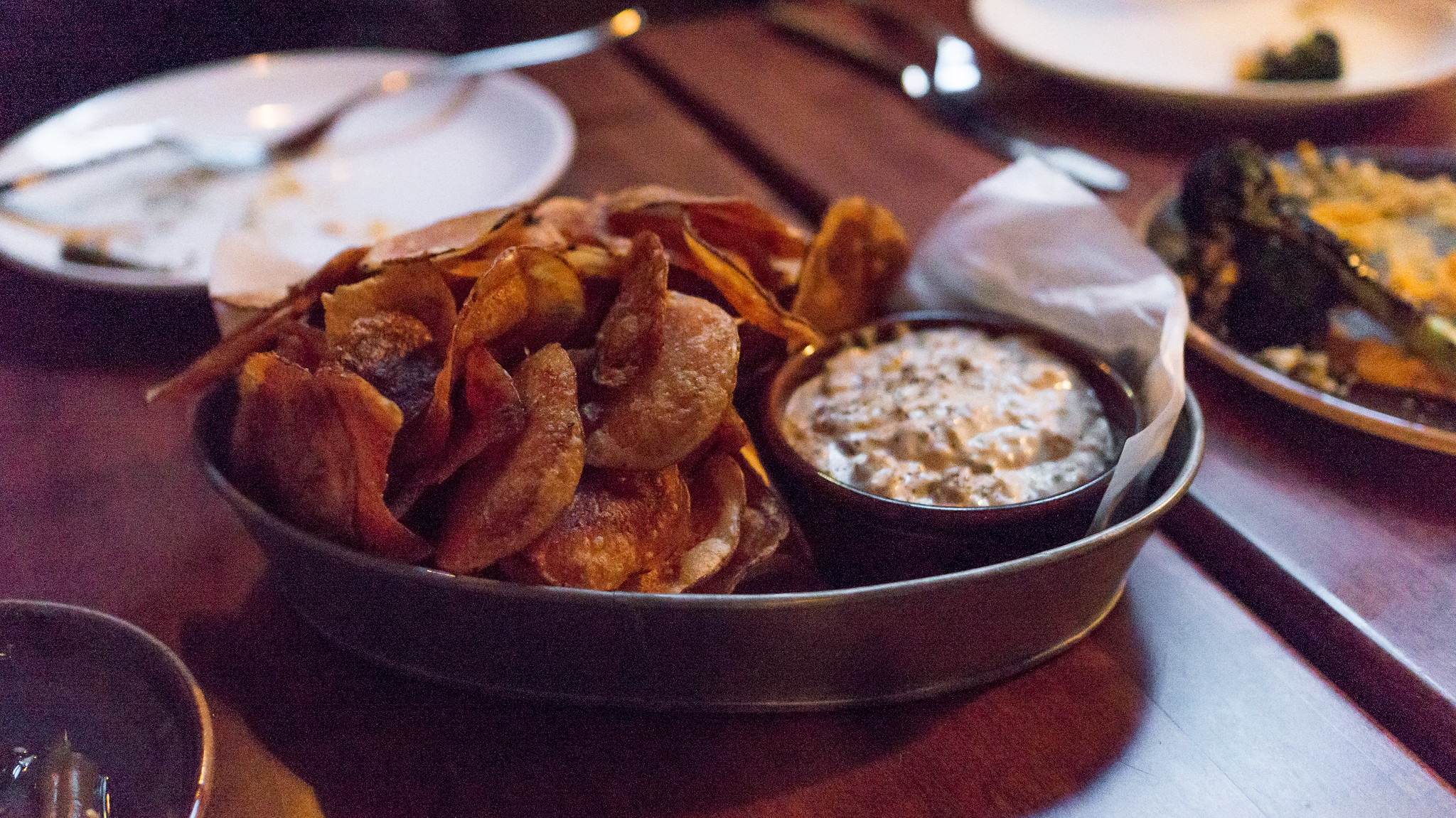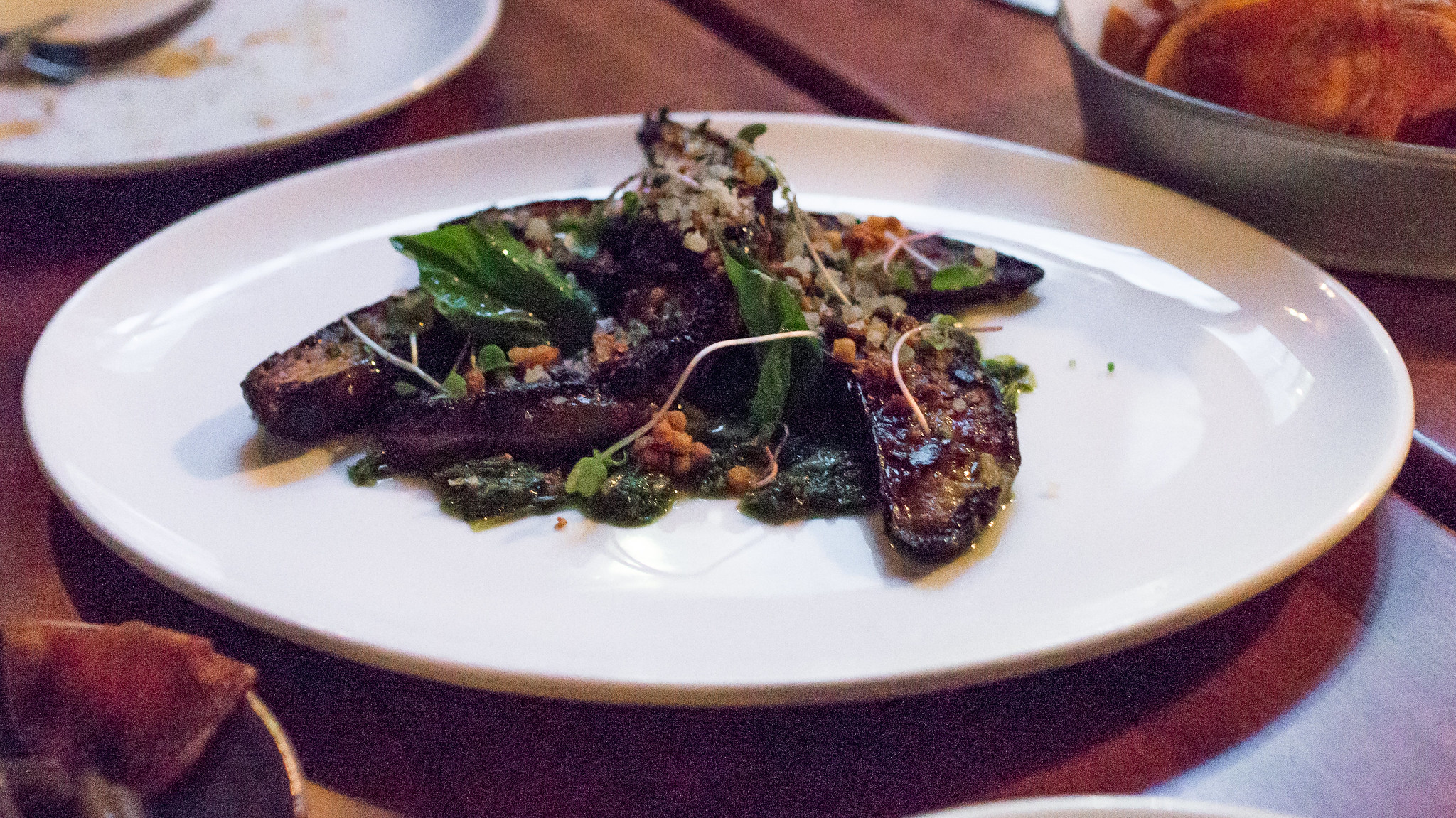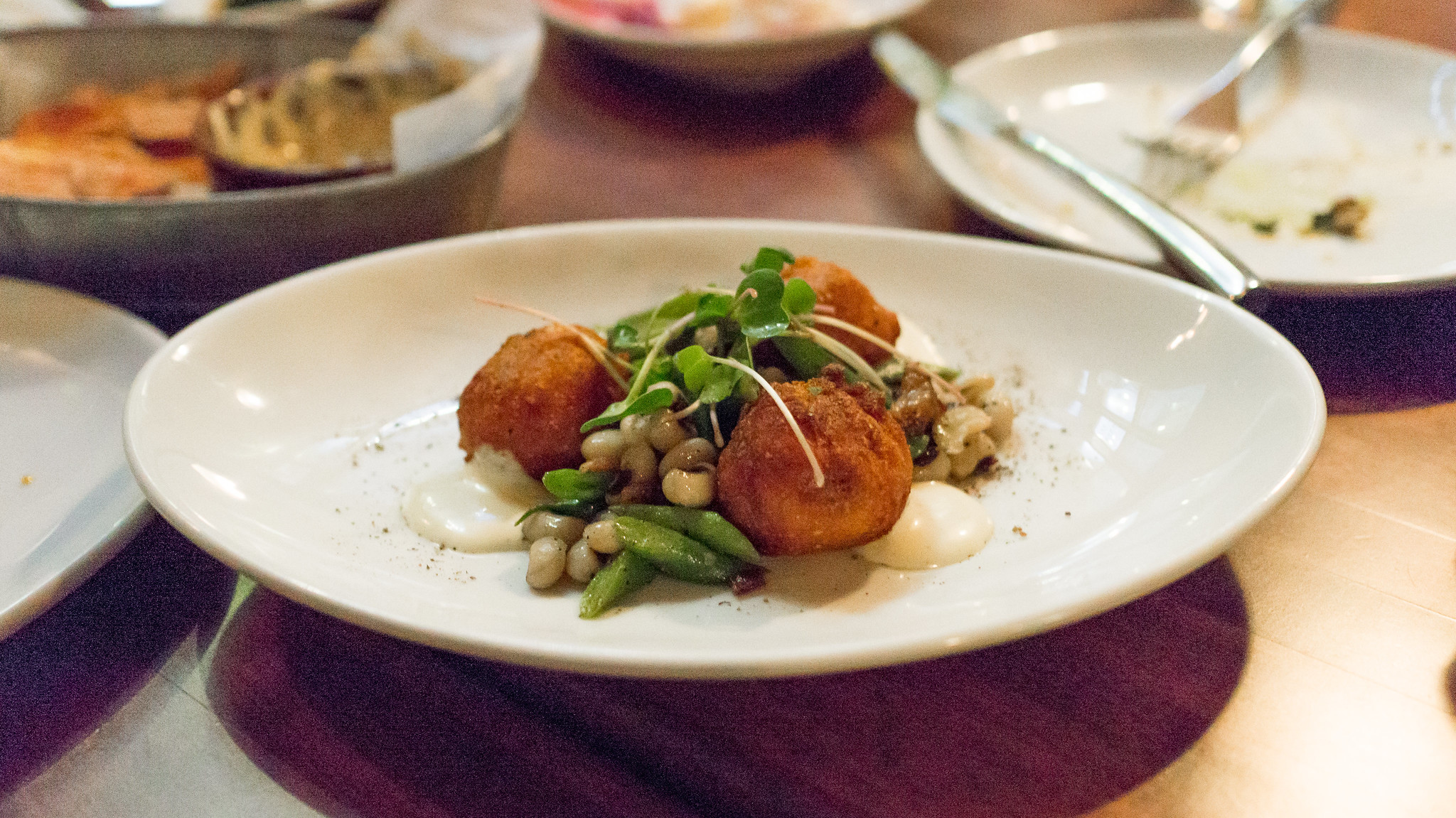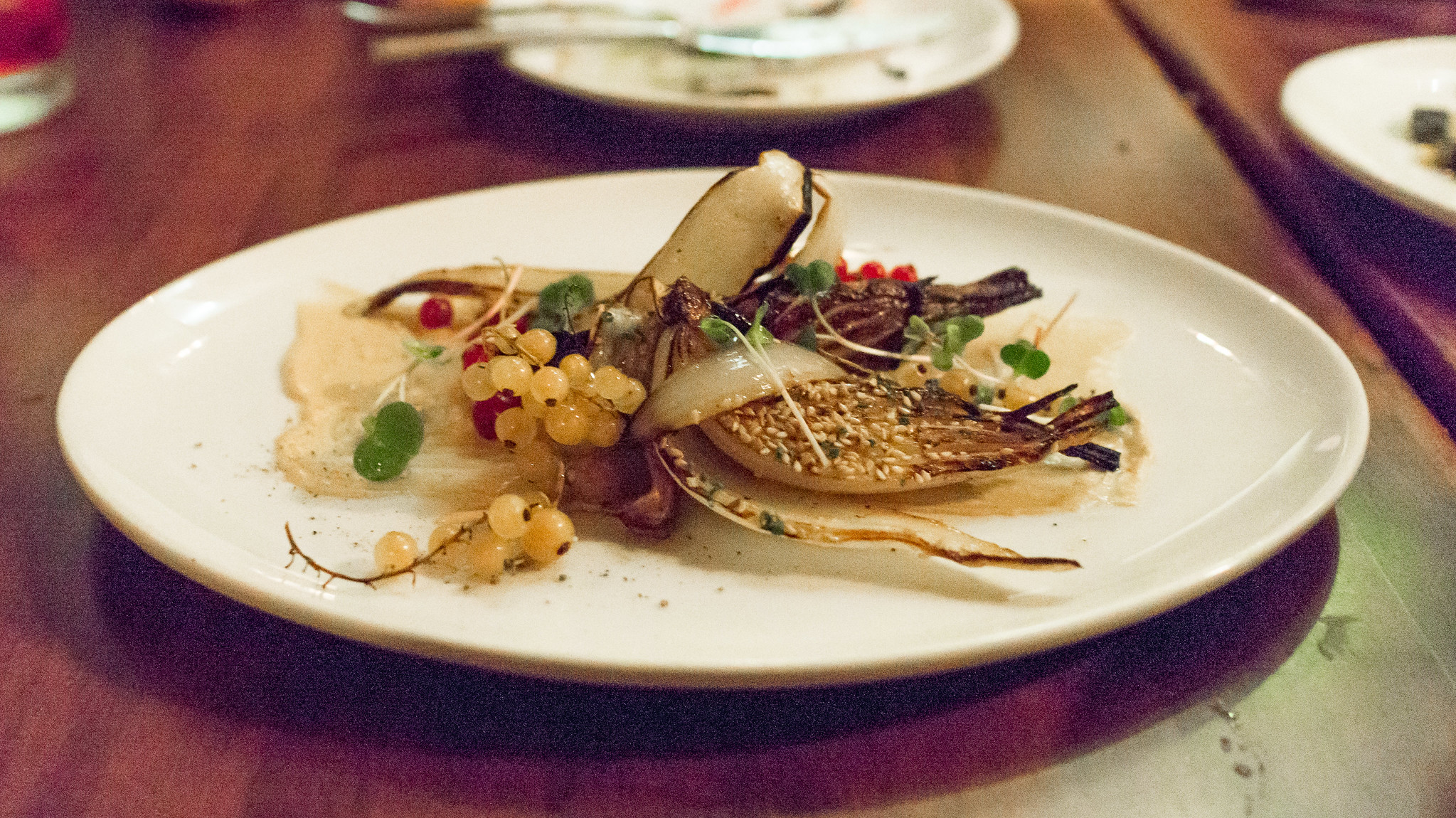Monday, December 22, 2014
Cobaya Diego at La Mar
It was big news when Gaston Acurio – Peru's most famous and celebrated chef – decided to open a restaurant in Miami. But Acurio has literally dozens of restaurants around the world; he's clearly not cooking in all of them at the same time. At Miami's La Mar, the executive chef responsibilities fall to Diego Oka. In an Edible South Florida piece last year, I recounted Diego's introduction to Acurio as a nervous 16 year old peeking around the corner of a supermarket aisle. He was invited to visit Acurio's restaurant the next day, and pretty much never left. After working with Acurio in Peru, he opened La Mar Cebicheria Peruana in San Francisco with him, then came to Miami to open our own version of La Mar.
Perhaps unlike many other U.S. cities (including San Francisco), Peruvian cuisine is nothing new here. In fact, South Florida already had over 200 Peruvian restaurants when I last counted, as La Mar was opening. But there are few, if any, places, that show the same creativity and attention to ingredients as are on display at La Mar. We got a preview of what Diego could do when he went off-menu at our Cobayapalooza dinner in July, and were eager to see more.
Last week a small group of guinea pigs assembled on the patio behind La Mar in the Mandarin Oriental, overlooking the lights of downtown Brickell across a sliver of Biscayne Bay. After some Pisco Sours to set the mood, Diego served up seven courses that were simultaneously creative and grounded in Peruvian flavors.[1]
(You can see all my pictures in this Cobaya Diego flickr set – apologies for the wonky artificial lighting, but the dark outdoor setting left me with no choice).
The menu started with a tiradito – a dish reflective of the mingling of local and Japanese food traditions that leads many to call Peruvian food the original "fusion cuisine" (indeed, el jefe Gaston Acurio recently published a book called "500 Years of Fusion"). Typically prepared with sashimi-style slices of raw fish that are then bathed in a ceviche-style citrus and chile bath, Diego's version here used slices of raw scallop, tongues of uni and brilliant orange salmon roe, all napped with a creamy rocoto chile leche de tigre.
Another modern iteration of a traditional Peruvian dish followed: a potato causa made with luridly hued purple potatoes, paired with blocks of seared tuna, a green mango chalaca sauce and crispy sweet potato strings.
(continued ...)
Thursday, November 27, 2014
P.I.G. (Pork Is Good) #5
Almost exactly five years ago was one of the first times I broke out a camera for a food event. The occasion was the inaugural "P.I.G." (for "Pork Is Good") party put on by Chef Jeremiah Bullfrog. A couple dozen folks showed up at the Harvey W. Seed American Legion Hall, Jeremiah served up some chicharrones, some smoked pork butt bao buns, a whole pig rolled porchetta style and cooked in a caja china out back, and a bevy of beverages, and everyone was greasy and happy.
Jeremiah's done it every year since, and every year it's grown. Last year, P.I.G. #4 was more of a collective effort, with several other local chefs chipping in on this ode to all things porcine. A couple weekends ago, P.I.G. #5 saw many of the same faces and some new ones too: Kyle Foster (formerly the sous chef at the late, lamented Talula), Conor Hanlon and Josh Gripper (The Dutch), James Strine (Café Boulud), Brad Kilgore (soon-to-open Alter, until recently at J&G Grill), Todd Erickson (Haven and HuaHua's Taqueria), Jamie DeRosa (Tongue & Cheek), Michael Pirolo (Macchialina), William Crandall (Azul), Giorgio Rapicavoli (Eating House), Brian Mullins (Ms. Cheezious), Steve Santana (Taquiza), Kris Wessel (Oolite), and Giselle Pinto (Sugar Yummy Mama).
(You can see all my pictures in this P.I.G. #5 flickr set).
Man, do I miss Kyle. In the last couple years before Talula closed, he was often the mastermind of some great offal-centric appetizers and charcuterie items on the menu. He moved along to Denver and is doing just fine without me: he's now the sous at a place called Colt & Gray, is still doing the offal and cured meats routine, and recently got engaged (his fiancée came down to Miami with him to work the event). His charcuterie game is still very strong, and he brought a bunch of it: pork heart salami, finnochiona, jambon persille, ciccioli, and another salami he called the "Forest Moon of Endor," among others.
(continued ...)
Monday, November 17, 2014
Alinea - Chicago
The idea of dinner as spectacle is hardly a new one. In the Satyricon, Petronius recounts the (fictional) dinner of Trimalchio, featuring such delicacies as pea hen eggs filled with tiny songbirds, a hare with wings affixed to it to look like a pegasus, and a whole wild boar with baskets of dates hanging from its tusks, surrounded by pastry piglets and stuffed with live thrushes – preceded by a presentation of hunting-themed tapestries and a pack of hunting dogs traipsing through the dining room to set the mood.
Fast forward a couple thousand years, and recently Jeremiah Tower – one of the titans of the 1980's dining universe, who is returning to the business on a mission to resuscitate the Tavern on the Green – spoke with Andrew Friedman about the theater of dining at TOTG:
My first meal at Alinea was a long time ago, within a couple years of its opening. They were the heady days of foams and spheres and fluid gels – back when what is now inaptly named "modernist cuisine" went by the equally inapt "molecular gastronomy." On that first visit, we had bacon swinging on trapezes, bites perched on bobbing "antennae," and dishes nestled on pillows emitting flower-perfumed air. But perhaps the most striking oddity of it all was the somber, ramrod-stiff waitstaff. There was a huge disconnect between the playfulness coming out of Grant Achatz's kitchen and the solemnity of those who served it, as if the food wouldn't be taken seriously enough if they actually cracked a smile.
Achatz no longer needs to be concerned with being taken seriously: Alinea now has three Michelin stars, a No. 9 position on San Pellegrino's 50 Best Restaurants list, and multiple James Beard awards to vouch for that. And everyone's smiling.[1]
(You can see all my pictures in this Alinea - October 2014 flickr set.)
I'd not been back to Alinea until last month,[2] when the opportunity for a return visit fortuitously arose. The gap afforded an interesting time-lapse view of the restaurant's maturation. Many things that were still just in the concept stage at the time of my initial visit – reincorporating classical old-school dishes and table-side service, the now-famous dessert on the table – are now firmly entrenched in the repertoire.[3] Dishes that were once emblematic of Alinea's cutting edge creativity – like the "hot potato cold potato" pictured above – are now signature dishes, evoking more nostalgia than awe (for a repeat visitor anyway).
There is also plenty that's new, and plenty that's still awe-inspiring. But what was most notable to me, given my peculiar perspective, is how the front of the house at Alinea has caught up with the back. This is now a fully realized experience where the food and the spectacle of its presentation are on equal footing. As to whether or not that's a good thing – I'll try to address after the recap of my recent visit.
It's hard to imagine a more traditional way to commence a meal than with caviar and champagne. It's hard to come up with a better one either. The accompaniments to the caviar here are customary ones, but of course transformed: a brioche foam, an egg yolk emulsion, a transparent gelée flavored with onion and capers. The osetra caviar itself was excellent, as was the Pierre Moncuit champagne.
Then the show really starts. Servers arrive wielding blocks of ice that are 1/25 size replicas of the iceberg that sunk the Titanic,[4] strewn with a sort of reinvented seafood platter: a sphere of oyster liquor and mignonette sauce nestled in the oyster's shell; strips of chewy clam glazed with unagi sauce, served ishiyaki style on a hot rock; a sort of deconstructed miso soup with kombu and crumbles of miso and bonito; a sort of reconstructed tomato of fresh tuna; a shooter of Asian pear and yuzu juices dug right into the block of ice, with a fat glass straw planted in it (which, awkwardly, was too long to use without actually standing up at the table); and a cylindrical sea urchin cake, infused with vanilla, wrapped in nori, and topped with lemon zest and coarse salt, poised right between savory and sweet.
(continued ...)
Fast forward a couple thousand years, and recently Jeremiah Tower – one of the titans of the 1980's dining universe, who is returning to the business on a mission to resuscitate the Tavern on the Green – spoke with Andrew Friedman about the theater of dining at TOTG:
Friedman: When you say outrageous, what do you mean, for people who weren't there back in the day?So in a sense, what Alinea is doing is nothing new. But few contemporary restaurants I've visited have the same dedication to the theater of dinner.
Tower: Oh, I mean, my God. Oversized chandeliers and didn't he put live animals at one point for some party? It reminded me of the Ritz, a nouveau riche version of the Ritz, where in the old days, a grand Duke wanted a winter scene so they flooded the basement and froze it and draped everything in ice. It was that kind of theater.
Friedman: What do you remember about the food at the old Tavern?
Tower: You know, I honestly don’t remember anything. I've been looking at old menus from the 1950s but I don’t think I ever looked at the plate. I was too busy looking at the decor and the action.
My first meal at Alinea was a long time ago, within a couple years of its opening. They were the heady days of foams and spheres and fluid gels – back when what is now inaptly named "modernist cuisine" went by the equally inapt "molecular gastronomy." On that first visit, we had bacon swinging on trapezes, bites perched on bobbing "antennae," and dishes nestled on pillows emitting flower-perfumed air. But perhaps the most striking oddity of it all was the somber, ramrod-stiff waitstaff. There was a huge disconnect between the playfulness coming out of Grant Achatz's kitchen and the solemnity of those who served it, as if the food wouldn't be taken seriously enough if they actually cracked a smile.
Achatz no longer needs to be concerned with being taken seriously: Alinea now has three Michelin stars, a No. 9 position on San Pellegrino's 50 Best Restaurants list, and multiple James Beard awards to vouch for that. And everyone's smiling.[1]
(You can see all my pictures in this Alinea - October 2014 flickr set.)
I'd not been back to Alinea until last month,[2] when the opportunity for a return visit fortuitously arose. The gap afforded an interesting time-lapse view of the restaurant's maturation. Many things that were still just in the concept stage at the time of my initial visit – reincorporating classical old-school dishes and table-side service, the now-famous dessert on the table – are now firmly entrenched in the repertoire.[3] Dishes that were once emblematic of Alinea's cutting edge creativity – like the "hot potato cold potato" pictured above – are now signature dishes, evoking more nostalgia than awe (for a repeat visitor anyway).
There is also plenty that's new, and plenty that's still awe-inspiring. But what was most notable to me, given my peculiar perspective, is how the front of the house at Alinea has caught up with the back. This is now a fully realized experience where the food and the spectacle of its presentation are on equal footing. As to whether or not that's a good thing – I'll try to address after the recap of my recent visit.
It's hard to imagine a more traditional way to commence a meal than with caviar and champagne. It's hard to come up with a better one either. The accompaniments to the caviar here are customary ones, but of course transformed: a brioche foam, an egg yolk emulsion, a transparent gelée flavored with onion and capers. The osetra caviar itself was excellent, as was the Pierre Moncuit champagne.
Then the show really starts. Servers arrive wielding blocks of ice that are 1/25 size replicas of the iceberg that sunk the Titanic,[4] strewn with a sort of reinvented seafood platter: a sphere of oyster liquor and mignonette sauce nestled in the oyster's shell; strips of chewy clam glazed with unagi sauce, served ishiyaki style on a hot rock; a sort of deconstructed miso soup with kombu and crumbles of miso and bonito; a sort of reconstructed tomato of fresh tuna; a shooter of Asian pear and yuzu juices dug right into the block of ice, with a fat glass straw planted in it (which, awkwardly, was too long to use without actually standing up at the table); and a cylindrical sea urchin cake, infused with vanilla, wrapped in nori, and topped with lemon zest and coarse salt, poised right between savory and sweet.
(continued ...)
Monday, November 10, 2014
L2O - Chicago
I was looking forward to writing about my meal at L2O in Chicago last month. I didn't realize it was going to be a eulogy.
L2O first vaulted to prominence in 2008, when the Lettuce Entertain You Enterprises group lured chef Laurent Gras from San Francisco to open a high-end, seafood-focused restaurant in Chicago. In 2010, L2O earned three Michelin stars; that same month, Gras left. The next year, Matthew Kirkley took over as chef de cuisine and eventually was elevated to executive chef. Many quietly said that the restaurant under Kirkley was every bit as good – if not better – than under Gras' reign.
Now comes news that the restaurant will be closing at the end of the year. On one hand, it's a big surprise: L2O is one of the city's – and country's – most highly regarded restaurants, even if it doesn't seem to draw the same quantum of attention as the venues of Chicago royalty like Grant Achatz, Rick Bayless, and Paul Kahan. On the other hand, L2O always seemed an odd fit with LEYE, which is better known (to me, anyway) for crowd-pleaser type places like Cafe Ba-Ba-Reeba and Shaw's Crab House. LEYE's founder, Rich Melman, seemed to confirm as much:
"(L2O) had never been a money maker for us," Melman says. "As with all restaurants, it's all about volume. I don't want to do four-star restaurants anymore, at least for the foreseeable future. Three partners came out of L2O and it was successful in that way."Surprise or not, L2O's imminent closing is a disappointment: this was one of the most pleasing, satisfying meals I've had all year. It's a shame it will be my only chance to experience it.
(You can see all my pictures in this L2O flickr set.)
The tasting menu[1] starts with a series of snacks. The first is a sort of ode to Chesapeake Bay (Chef Kirkley is a Baltimore native): a few precariously balanced wafers with the puffy texture of Chinese shrimp chips, but the intense, pronounced flavors of crab and Old Bay seasoning. Next, a mussel "tart," the mollusks' flavor infused into a quivering mousse brightened with parsley and citrus, nestled in a crispy shell. Then, a puffy pomme souflée, ingeniously filled with a creamy salt cod brandade, and dusted with coffee and bergamot for a pleasingly bitter counterpoint.
Maybe it was brought into sharper focus by comparison to the theatrical pyrotechnics of Alinea, where I'd eaten the night before, but there's an austerity and minimalism to Kirkley's style that I really appreciated. Most courses featured only a few primary ingredients, the flavors of which were honed, concentrated, and often reiterated within the dish. Indeed, the composition of many plates was similar: a fish or seafood item as the primary focus, sometimes a bit of animal fat to provide richness and extend flavors, often a sauce extracted from the primary ingredients, an accent note of herb or citrus.
That pattern was set in this first course, a pink ball of langoustine[2] tartare, enriched with lardo and brightened with pickled lemon and English pea. This was followed by a Kusshi oyster, nestled in its shell under a bed of green apple and vermouth creams, and presented like some nautical bric-a-brac from Shell City. Pinkish orange ocean trout was lightly cured, presented in silky, supple ribbons complemented by the delicate but intense flavors of Chartreuse, citrus confit and airy little gougere-like poufs dusted with fines herbes.
(continued ...)
Thursday, October 23, 2014
Elements: Scott Anderson Dinner at The Dutch
Much as I might wish for it, I don't get to spend my days traversing the country from restaurant to restaurant. We're fortunate to travel often and usually eat very well when we do, but even so, there are places I'm unlikely to ever visit. Princeton, New Jersey would fall into that category.[1] And as a result, I figured I would never eat at Elements, Chef Scott Anderson's restaurant which opened in Princeton about five years ago (and is currently closed while moving to a new location).
This was cause for regret, because I'd read and heard many very good things about it. A couple guys whose opinions I value raved about their meals there. Despite being somewhat off the grid, it was highly regarded enough to make Opinionated About Dining's list of the top twenty restaurants in the U.S. So I was pretty excited when I learned, through Chef Jeremiah Bullfrog, that Scott was interested in doing a dinner here in Miami.
We sent up some Cobaya flares for other folks who might be interested, and Chef Conor Hanlon of The Dutch graciously agreed to participate and play host. Together, Scott, Jeremiah, Conor and Josh Gripper, The Dutch's pastry chef, put together a pretty extraordinary ten-course dinner.
(You can see all my pictures in this Chef Scott Anderson (Elements) at the Dutch flickr set. Apologies for the weird sepia-toned hue to these pictures; the food-unfriendly yellow lights on The Dutch's terrace are the only downside of putting on events there).
A few canapes to start: a pink beet macaron with an herbed chevre filling, a nice repurposing of a traditional combination; a crispy chicharron topped with a Thai-inspired green papaya and apple salad; and an airy – kind of fishy – scallop chip topped with pungent kimchee and trout roe. I'm assuming each chef did one of these, but they didn't tell us who (I'll guess Conor for the macaron, Jeremiah for the papaya salad, and Scott for the scallop chip).
Sometimes simple is bold. Particularly in this kind of dinner format, where the natural tendency is to show off, restraint isn't easily exercised. But that's what Jeremiah displayed, letting the main ingredient – some really lush, buttery baja yellowtail (a/k/a hiramasa or goldstriped amberjack) – stand out in his first dish. Meaty cubes and a couple silky ribbons of the raw fish were paired with a verdant fava bean purée, a few green leaves (tart sorrel, grassy tatsoi?), some slivers of shallot and a thin round of peppery black radish for some bite.
Conor followed with something also aquatic and equally elegant: cured ora king salmon, a richly fatty but clean-flavored salmon sustainably farmed off the coast of New Zealand, served with slivered radishes, puddles of deep, funky black garlic hollandaise, and hillocks of nutty crispy quinoa. The composition brought to mind a more sophisticated iteration of the combination of lox and a pumpernickel bagel that is so deeply resonant among my people.
I'm not sure how much communication there was between the chefs about their dishes, but it was interesting that Scott's first course also seemed to be a continuation of the same theme. A plump, sweet scallop (brought in live) was just barely cooked through, topped with a relish of Brazilian starfish pepper and shallots that tasted both spicy and fruity (reminiscent of habanero but with less capsicum heat), plus buttery avocado oil, a couple nasturtium leaves and a bright marigold blossom. These were assertive flavors to match with the somewhat delicate seafood, but I loved how they came together.
(continued ...)
This was cause for regret, because I'd read and heard many very good things about it. A couple guys whose opinions I value raved about their meals there. Despite being somewhat off the grid, it was highly regarded enough to make Opinionated About Dining's list of the top twenty restaurants in the U.S. So I was pretty excited when I learned, through Chef Jeremiah Bullfrog, that Scott was interested in doing a dinner here in Miami.
We sent up some Cobaya flares for other folks who might be interested, and Chef Conor Hanlon of The Dutch graciously agreed to participate and play host. Together, Scott, Jeremiah, Conor and Josh Gripper, The Dutch's pastry chef, put together a pretty extraordinary ten-course dinner.
(You can see all my pictures in this Chef Scott Anderson (Elements) at the Dutch flickr set. Apologies for the weird sepia-toned hue to these pictures; the food-unfriendly yellow lights on The Dutch's terrace are the only downside of putting on events there).
A few canapes to start: a pink beet macaron with an herbed chevre filling, a nice repurposing of a traditional combination; a crispy chicharron topped with a Thai-inspired green papaya and apple salad; and an airy – kind of fishy – scallop chip topped with pungent kimchee and trout roe. I'm assuming each chef did one of these, but they didn't tell us who (I'll guess Conor for the macaron, Jeremiah for the papaya salad, and Scott for the scallop chip).
Sometimes simple is bold. Particularly in this kind of dinner format, where the natural tendency is to show off, restraint isn't easily exercised. But that's what Jeremiah displayed, letting the main ingredient – some really lush, buttery baja yellowtail (a/k/a hiramasa or goldstriped amberjack) – stand out in his first dish. Meaty cubes and a couple silky ribbons of the raw fish were paired with a verdant fava bean purée, a few green leaves (tart sorrel, grassy tatsoi?), some slivers of shallot and a thin round of peppery black radish for some bite.
Conor followed with something also aquatic and equally elegant: cured ora king salmon, a richly fatty but clean-flavored salmon sustainably farmed off the coast of New Zealand, served with slivered radishes, puddles of deep, funky black garlic hollandaise, and hillocks of nutty crispy quinoa. The composition brought to mind a more sophisticated iteration of the combination of lox and a pumpernickel bagel that is so deeply resonant among my people.
I'm not sure how much communication there was between the chefs about their dishes, but it was interesting that Scott's first course also seemed to be a continuation of the same theme. A plump, sweet scallop (brought in live) was just barely cooked through, topped with a relish of Brazilian starfish pepper and shallots that tasted both spicy and fruity (reminiscent of habanero but with less capsicum heat), plus buttery avocado oil, a couple nasturtium leaves and a bright marigold blossom. These were assertive flavors to match with the somewhat delicate seafood, but I loved how they came together.
(continued ...)
Friday, October 3, 2014
elements - Scott Anderson Dinner at The Dutch 10.20.14
I've been teasing it on Twitter and to the Cobaya - Gourmet Guinea Pigs mailing list, now it's official: October 20, 2014, 7pm, Chef Scott Anderson of Elements restaurant will be doing a nine-course dinner with chefs Conor Hanlon of The Dutch (which will also be graciously hosting the dinner) and Jeremiah Bullfrog of the gastroPod.
Anderson's restaurant is one of those places I've always wanted to visit but didn't ever see the opportunity – I'm not often passing through Princeton, New Jersey. Now, instead, he's coming here. To get some idea of why I'm excited, I'd encourage you to read these write-ups from a couple folks whose opinions I hold in high regard: ChuckEats and DocSconz. And they're not alone: despite not being on everyone's radar screen, Elements was included in Opinionated About Dining's Top 20 US Restaurants list.
The dinner will be $206 per person, inclusive of tax and tip. A pairing option will be available for purchase at the restaurant. To get seats, click on the "Add to Cart" button below (you can change the number of seats once you're on the PayPal page). The number of spots is very limited, so I'd encourage you to move quickly:
Elements Dinner at The Dutch
Monday, October 20, 2014
$206pp
Monday, October 20, 2014
$206pp
Wednesday, October 1, 2014
Alden & Harlow - Boston
The primary purpose of our trip to Boston actually wasn't eating, but college touring for Frod Jr. Our second day found us in the Boston U. neighborhood around lunchtime, during which we paid a visit to a sweet little Asian food court in the Super 88 Market just west of the campus. There were nearly a dozen different vendors here, and we had perfectly respectable banh mi sandwiches and bowls of pho dac biet from the Pho Viet stall.
Dinner, meanwhile, found us in Cambridge, where we'd made a reservation at Alden & Harlow. I hadn't heard much about the restaurant or the chef, but the unusual, vegetable-centric menu drew me in. (Then shortly after our visit, the restaurant was included in Bon Appetit's "50 Best New Restaurants" list.)
(You can see all my pictures in this Alden & Harlow flickr set).
The ampersand-ed name sounds like a lot of other restaurants that have opened in the past few years, and it looks like a lot of them too: the basement space in Harvard Square is clad in lots of reclaimed wood, subway tile, vintage signs and exposed bulbs. If only more of those places which looked like this had food this good.
One corner of the menu is devoted to "snacks" (a word I find almost irresistibly alluring), all priced at $8 each, while the rest of the menu comprises a couple dozen items, most of which are "share plate" type dishes in the $15 range. A good number of these dishes place vegetables in a feature role.
Frod Jr. can not resist chips and dip, and none of the rest of the family complains when he orders them. Alden & Harlow's "three onion dip" was a really good version, for which I now know the secret, thanks to BA publishing the recipe: a triple-blast of umami from anchovies, mushroom powder and worcestershire sauce. I don't have a recipe, but the appeal of the grilled broccoli served over squash hummus dusted with bianco sardo cheese and crushed cashews isn't so mysterious: it's the great interplay of charred, creamy and crunchy textures.
When was the last time you ate something so good you immediately ordered it again? Not "immediately" as in "the next time you went to the restaurant;" "immediately" as in "while you're still finishing the first order"? That's what we did with Alden & Harlow's seared eggplant with green sauce, sheep's milk cheese, crispy fregola and basil leaves. The eggplant is smoky and almost meaty in texture, the sauce is herbaceous and bright, there's a creamy, briny tang from the cheese, and crunchy contrast from the fried pasta balls. It was one of the best things I've eaten all year.
Many dishes follow the same winning formula, though the particular components differ. Sweet onions are roasted in butter til their edges blacken, paired with an anchovy and tahini crema and sweet-tart white and red currants for contrast. Crispy corn fritters are served over a silky crema, with a summer bean succotash infused with the smoke of Benton's bacon. A similar composition is played by sweet corn gnocchi in a zucchini ragout with crispy serrano ham croutons over the top.
(continued ...)
Dinner, meanwhile, found us in Cambridge, where we'd made a reservation at Alden & Harlow. I hadn't heard much about the restaurant or the chef, but the unusual, vegetable-centric menu drew me in. (Then shortly after our visit, the restaurant was included in Bon Appetit's "50 Best New Restaurants" list.)
(You can see all my pictures in this Alden & Harlow flickr set).
The ampersand-ed name sounds like a lot of other restaurants that have opened in the past few years, and it looks like a lot of them too: the basement space in Harvard Square is clad in lots of reclaimed wood, subway tile, vintage signs and exposed bulbs. If only more of those places which looked like this had food this good.
One corner of the menu is devoted to "snacks" (a word I find almost irresistibly alluring), all priced at $8 each, while the rest of the menu comprises a couple dozen items, most of which are "share plate" type dishes in the $15 range. A good number of these dishes place vegetables in a feature role.
Frod Jr. can not resist chips and dip, and none of the rest of the family complains when he orders them. Alden & Harlow's "three onion dip" was a really good version, for which I now know the secret, thanks to BA publishing the recipe: a triple-blast of umami from anchovies, mushroom powder and worcestershire sauce. I don't have a recipe, but the appeal of the grilled broccoli served over squash hummus dusted with bianco sardo cheese and crushed cashews isn't so mysterious: it's the great interplay of charred, creamy and crunchy textures.
When was the last time you ate something so good you immediately ordered it again? Not "immediately" as in "the next time you went to the restaurant;" "immediately" as in "while you're still finishing the first order"? That's what we did with Alden & Harlow's seared eggplant with green sauce, sheep's milk cheese, crispy fregola and basil leaves. The eggplant is smoky and almost meaty in texture, the sauce is herbaceous and bright, there's a creamy, briny tang from the cheese, and crunchy contrast from the fried pasta balls. It was one of the best things I've eaten all year.
Many dishes follow the same winning formula, though the particular components differ. Sweet onions are roasted in butter til their edges blacken, paired with an anchovy and tahini crema and sweet-tart white and red currants for contrast. Crispy corn fritters are served over a silky crema, with a summer bean succotash infused with the smoke of Benton's bacon. A similar composition is played by sweet corn gnocchi in a zucchini ragout with crispy serrano ham croutons over the top.
(continued ...)
Subscribe to:
Posts (Atom)

